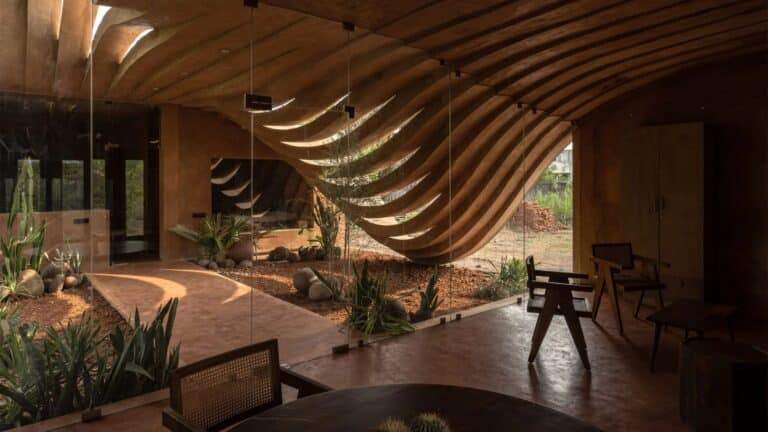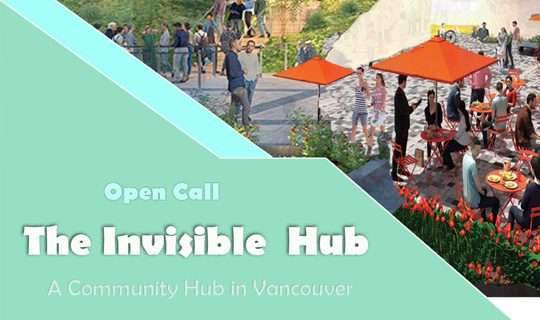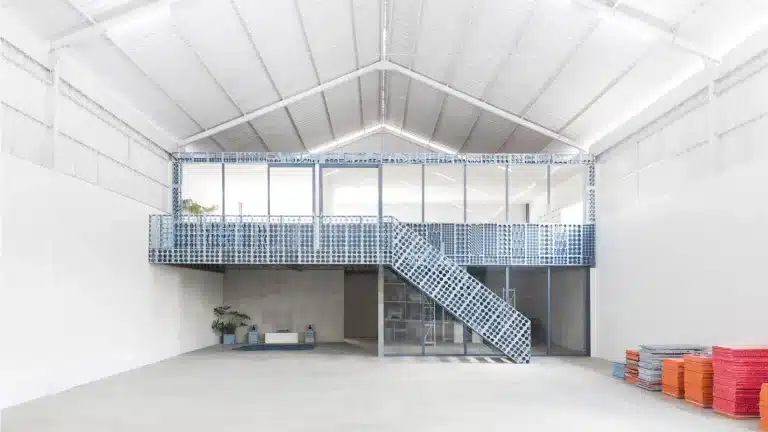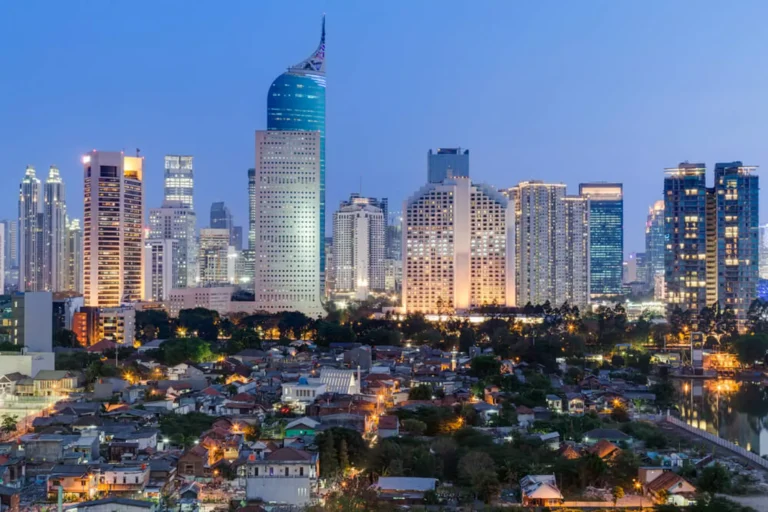In 2023, Copenhagen was honored with the title of World Capital of Architecture by UNESCO and the International Union of Architects. This recognition was not accidental, but rather a result of a long-term vision that integrates architecture into the fabric of daily life in a way that respects the environment and serves all members of society. This article explores how sustainable architecture in Copenhagen is a model to emulate, analyzing how this idea has been implemented across three main axes: the design of public spaces, the development of modern neighborhoods, and the integration of environmental sustainability into architectural practice.

Designing Public Spaces: Architecture as a Social Tool
The human-centered approach is a defining feature of public space design in Copenhagen. The city demonstrates how architecture can become a tool for enhancing social interaction and improving quality of life within sustainable architecture principles. This is evident in Copenhagen’s dedication to sustainable architectural development.
Projects such as the Cirkelbroen bridge go beyond their functional purpose; they are designed to encourage community engagement. With its circular seating arrangements, the bridge becomes both a connector and a gathering point, reinforcing the idea that public infrastructure should serve as a catalyst for social cohesion.
This philosophy reflects an urban design strategy that prioritizes pedestrians and cyclists, creating safe, accessible, and comfortable environments for all. Copenhagen’s approach to sustainable architecture highlights how cities can use design to shape inclusive public life, particularly through Copenhagen’s sustainable architecture initiatives.

Developing Modern Neighborhoods: Renewal Without Displacement
Many global cities face the challenge of gentrification—urban renewal that unintentionally displaces original residents. Copenhagen offers a different model, one that focuses on neighborhood development while preserving social diversity, demonstrating sustainable architecture principles. In Copenhagen, neighbourhood development aligns closely with sustainable architectural practices.
The Østerbro district , for example, exemplifies balanced urban regeneration. Its development includes new buildings, upgraded infrastructure, expanded green areas, and the creation of community facilities that cater to diverse socioeconomic groups, reflecting Copenhagen’s sustainable urban architecture vision.
| District | Type of Development | Social Focus |
|---|---|---|
| Østerbro | Comprehensive renewal | Mix of luxury and affordable housing |
| Nørrebro | Socially oriented projects | Social housing and cultural facilities |
This integrated approach ensures that neighborhoods remain socially mixed, reducing inequality and fostering a sense of belonging among residents, an essential aspect of Copenhagen’s sustainable architecture strategy.
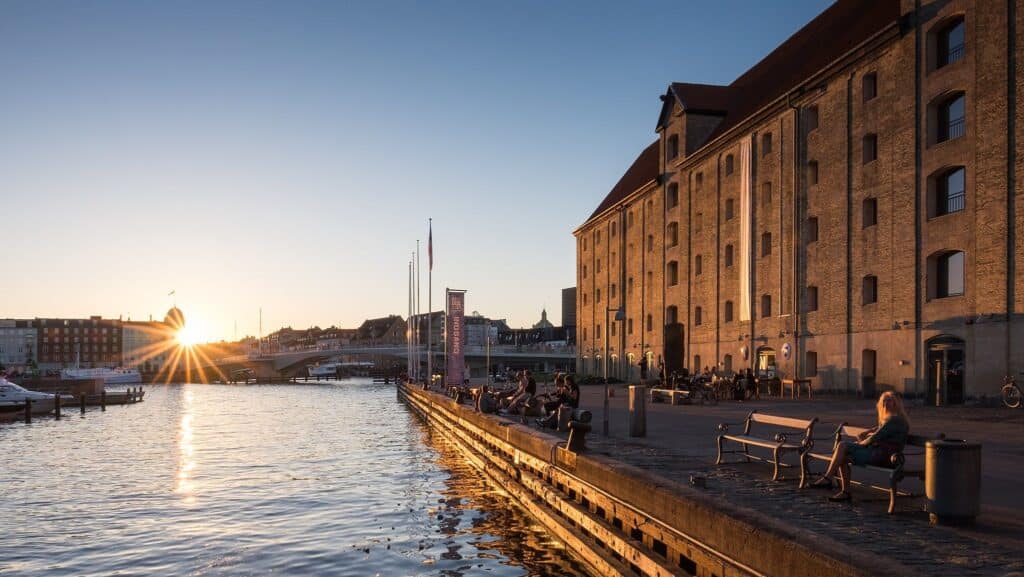
Architecture and Environmental Sustainability: Building a Greener Future
Architecture cannot be separated from climate and energy concerns, especially in the face of global environmental challenges. Here, Copenhagen emerges as a leading example of using architecture as a means to achieve environmental sustainability through its special emphasis on sustainable projects. In fact, sustainable architectural practices are prevalent throughout Copenhagen.
Through initiatives like the Nordhavn district , the city is developing smart, low-carbon neighborhoods. The design relies on renewable energy sources, efficient transport systems, and recycled materials, further enhancing Copenhagen’s sustainable architecture initiatives.
| Project | Environmental Goal | Key Technologies |
|---|---|---|
| Nordhavn | Carbon neutrality | Wind power, smart transit, energy-efficient buildings |
| Vesterbro | Eco-renovation | Improved thermal insulation, reduced carbon footprint |
These developments show how cities can embed sustainability into the core of their architectural planning, exemplified by Copenhagen’s sustainable architecture practices.

Frequently Asked Questions About Sustainable Architecture in Copenhagen
| Question | Answer |
|---|---|
| What makes Copenhagen a model for sustainable architecture? | It combines people-centered public space design, balanced urban development, and strong environmental commitments within its overall sustainable architecture vision. |
| Can other countries replicate Copenhagen’s experience? | Yes, provided there are clear policies supporting sustainability on architecture and active community involvement in planning processes. |
| What role does local government play in this process? | It manages major projects, provides funding, and enforces regulations that ensure environmental and social standards are met. |
Summary Table of Key Points
| Theme | Core Idea | Practical Application |
|---|---|---|
| Public Spaces | Architecture serves people | Cirkelbroen Bridge, green areas |
| Neighborhood Development | Renewal without displacement | Østerbro, Nørrebro |
| Environmental Sustainability | Building a greener future | Nordhavn project, renewable energy use |

ArchUp Opinion
Copenhagen’s approach to sustainable architecture offers an inspiring model, though it is not without limitations. The city benefits from relative economic stability, which facilitates large-scale investments in sustainable projects. Moreover, its success stems from a strong local culture of civic participation and openness to change. However, what often goes unnoticed is how applicable this model is to cities facing tougher political and financial challenges. Therefore, while we should study and admire Copenhagen’s experience in sustainable architecture, we must also assess it critically—not as a one-size-fits-all solution, but as a valuable reference for building fairer and more sustainable urban futures in the context of Copenhagen’s architectural strategies.



